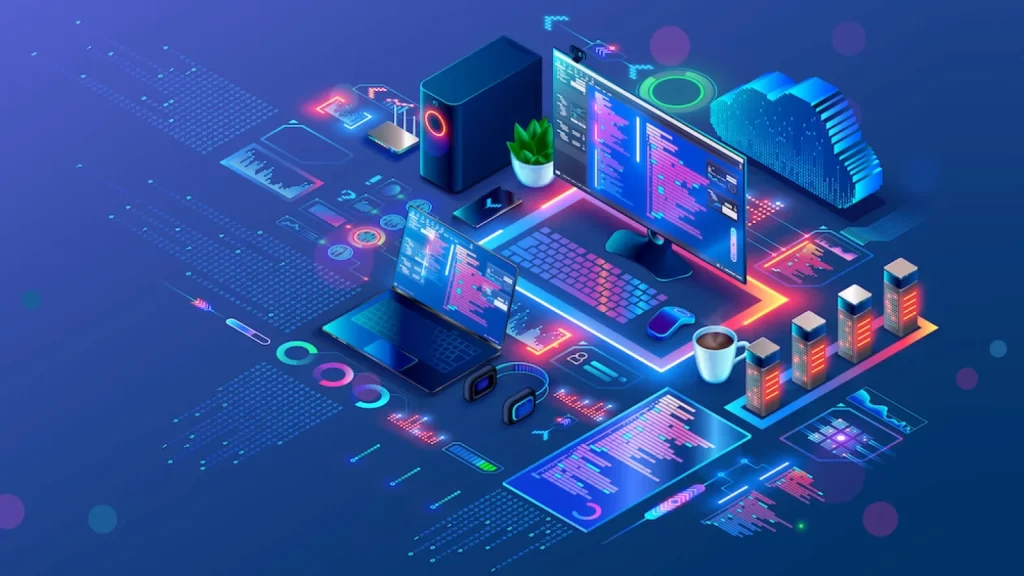Exploring Decentralized Internet Trends

Decentralised finance (DeFi) is another Web3 trend: peer-to-peer transactions between users without intermediaries, thereby offering such services at lower cost, or supply chain and entertainment industries tokenising non-fungible assets to democratise financial services and, respectively, revolutionise supply chains and entertainment industries.
The chief mission of Web 3.0 is decentralisation. One of the major objectives of the blockchain revolution is to reduce reliance on centralised platforms so that sovereignty in the digital realm can be redeemed, giving individuals as well as industries the ability to be in control of their own data.
Web 3.0
Web 3.0 is the suite of systems (semantic web technologies, natural language processing algorithms, distributed ledger technology or DLT, edge computing platforms like 5G mobile networks, and three-dimensional graphics augmented reality/virtual reality experiences [AR/VR]) that are currently under construction to help build an intelligent, connected and decentralised internet.
Due to such features, the current centralised version of the Internet – commonly known as Web 2.0 – will evolve into decentralised, user-centric, peer-to-peer version (Web 3.0) with enhanced levels of transparency, security and interfaces that will lead to greater ownership and control over digital assets by human participants.
Also, not needing centralised servers, and reduced back-door security and privacy breaches, makes blockchain data purely private – meaning users will never be forced to entrust anyone else but themselves with their data, a true disruption in terms of breaking the monopoly of giant technology companies, and creating more competitive mobile app ecosystems, but also making communications entirely end-to-end encrypted, not just partially like its alternatives, and also protected from hackers.
Decentralized Applications
Today consumers use applications for everything from going to the bank, having fun or booking a car park to communicating via email, but are entrusting the data to a single company that owns the app, whereas with a decentralised application this information could be more in the control of users.
Decentralised applications (dApps) are software programs that run across distributed peer-to-peer networks instead of on centralised architecture connected to a single body of the organisation. DApps generally leverage blockchain technologies, ensuring a lack of failure points and the certainty of transactions.
But DApps can be used to increase security, transparency and privacy of business systems. This could include health companies sharing and managing patient records across stakeholders, as well as new ways for patients and their health providers to interact in order to enable better treatment choices and bespoke treatment strategies. DApps could help their remote collaboration, which is now developing as natural part of today’s workforces.
Blockchain
Blockchain permits digital assets such as currencies like bitcoin to be sent between buyers and sellers, without their having to go through any third parties such as banks. Through the blockchain technology, transferring cryptocurrencies becomes more secure as well: each transaction is recorded in the blockchain. So even if you did want to cheat the system, such as having the same money you transferred going to two different accounts, you wouldn’t be able to.
Besides cryptocurrencies, other industries have logical applications for blockchain, as in tracking products from crop to shelf (with control of supply chain corruption and the trade of conflict diamonds [Marr, 2018]).
Blockchain can also help students benefit from a learning process by issuing real digital currency rewards that can be stored in their blockchain wallet, and pay the tuition or directly exchange trade for actual currencies to spur them forward (Chen 2018). Meanwhile, banks can leverage it to support real-time cross-border money transfers to accelerate the closing of transactions, and healthcare providers can use it to improve the interoperability, transparency and efficiency of their processes by delivering trust to healthcare information. (Chen 2018)
A Fully Decentralized Internet
The idea of the decentralisation the internet has gained a significant traction among developers and citizens alike, who feel it has become far too centralised – a few big tech companies having taken over the lion’s share while fully decentralised networks will provide free speech, perfect justice and total privacy.
They are not susceptible to attacks on a vulnerable central point, like centralised networks are. Nor are they subject to systematic manipulation – perception management, ‘fake news’, the ‘washing’ of dirty information – or to collusion between those involved in transmitting that information. Just look at the most recent tech giant scandal over the mining of data.
Community-owned systems such as Serval and mesh networks are similarly laudable, but they are still a long way behind their centralised competition, in terms of both throughput and reliability.
